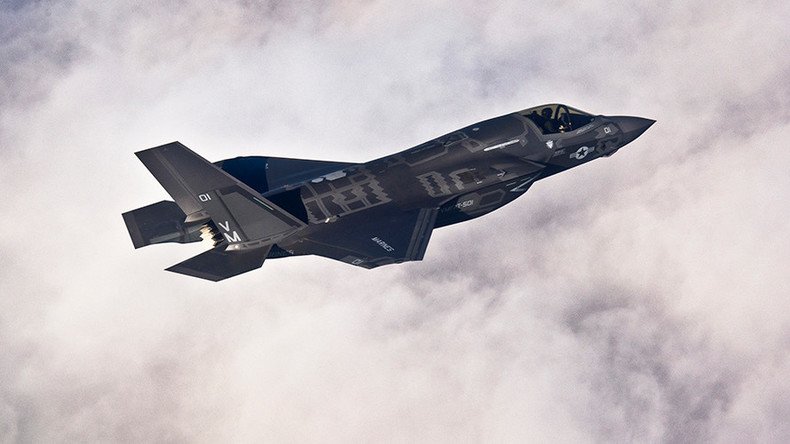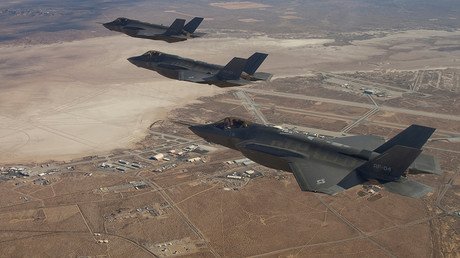F-35 report finds ‘only thing stealthy’ to be ‘the price tag’

A report on the F-35 stealth fighter jet says the most expensive weapons system in history is failing, while a new plan from the US Marine Corps calls for it to be the cornerstone of future missions.
On Thursday, a new paper was released by the Project on Government Oversight (POGO), an independent nonprofit that investigates corruption, misconduct, and conflicts of interest. In the report, Dan Grazier, a former Marine captain and defense policy investigator at POGO, draws on reports to outline a history of deficiencies of the F-35, which he calls a “national disaster.”
Grazier begins with the computer systems built into the jet, which are supposed to gather massive amounts of data to allow the pilot to “dominate the battlespace.” Instead, he says, they actually “interfere with the pilot’s ability to survive and prevail.”
Tests of the sensors, computers, and software have shown the systems create false targets and report false locations of targets.
Grazier reported that several pilots were dissatisfied with the Distributed Aperture System (DAS), which allows them to see in any direction, including underneath the jet as well as the flight instruments and threat symbols through their $600,000 helmet systems.
Pilots called the system “operationally unusable and potentially unsafe” and reported that their targets were obscured by “symbol cluster,” which made many of them see double. Grazier says that pilots are turning the system off and choosing to rely on the traditional instrument panels instead.
“Here again, the system is little better than those it’s supposed to replace,” Grazier says.
The report also says that electronics that share data with other F-35s are creating erroneous or split images of targets, and sometimes even dropping images of targets altogether.
“All of this means that the systems meant to give the pilots a better understanding of the world around them can do exactly the opposite,” Grazier said.
Software changes only enable the jet to carry two radar-guided advanced medium-range air-to-air missiles (AMRAAMs), which are not optimized for close, visual-range combat, further diminishing its air-to-air capabilities.
Grazier also says the planes are not stealth capable, are ineffective at providing close air support, and unsuitable for carrier operations.
President Donald Trump has also questioned the program and called on Lockheed Martin to cut $600 million from the last batch of F-35s. However, this may end up costing the taxpayers more, as the F-35 that will be bought are untested and will need to be retrofitted.
The taxpayers will also have to provide additional funding for modernization, modifications, maintenance, and repair.
READ MORE: US F-35 fighter jets arrive at military base in Japan in 1st overseas deployment
While the planes have not shown significant improvement over their predecessors, the Government Accountability Office (GAO) has estimated it will cost at least $3 billion to modernize the planes over the next six years.
At the same time, the US Marine Corp has laid out their future plans, which call for small, agile “lightning carriers” that will carry 16 to 20 F-35Bs. Most of the plan revolves around the F-35, which the Marines say will replace F/A-18, AV-8B, and EA-6B.
The plan calls for the Marine Corp to procure a total of 353 F-35s, which they say “will be the cornerstone of a multi-mission joint force.”
Never enough: $500mn more needed for #F35, #Pentagon told https://t.co/BqjzbOOmcfpic.twitter.com/8MZt3IXYvZ
— RT America (@RT_America) November 3, 2016













